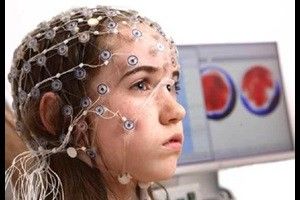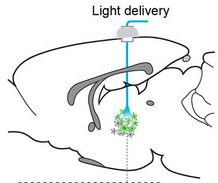Controlling the brain, consciousness and the unconscious through artificial means has long been a staple plot of science fiction. Yet history has a way of proving the fictional to end up as possible, and the future of brain-machine interface appears to hold greater promise than ever before.
Image Credit: Society for Neuroscience (SFN)According to Neuroscience Researcher, Yale University Fellow, and the Director of Yale’s Clinical Neuroscience Imaging Center, Dr. Hal Blumenfeld, we can now therapeutically (and safely) go inside the brain. As he reflected on the recent advances in neuroscience, Blumenfeld cited the progress that’s been made in the last decade in understanding the relationship between brain activity and conscious thought as one of the biggest breakthroughs. The ability to find the switch in the brain that regulates consciousness, and turn it on and off, is a major step toward the treatment of epilepsy, brain injuries and more, and could have a profound effect on mankind, he said.
“I think the exciting advances are really looking in the network approach to understanding the brain, looking at the brain as a network, and understanding that, for something as wide reaching as consciousness to happen, you really need the whole brain network or most of the brain,” Blumenfeld said. “There’s a switch deep in the middle of the brain that can either be turned on or off. When that gets turned on, the whole rest of the brain network, including the cortex, all start to interact and create consciousness. When that switch gets flipped off, consciousness is turned down and we lose consciousness.”
While it sounds like a simple on/off operation, Blumenfeld noted that it’s not a smooth, linear process and that the different states of consciousness are subject to big jumps and rapid changes in the transition. Where researchers have made the biggest leaps, he said, is in gaining an understanding of those transitions and interactions throughout the entire network of the brain and how they regulate the level of arousal, attention and awareness.
Going forward, these breakthroughs could have a major effect in managing epileptic seizures, Blumenfeld said. While an epileptic seizure usually only affects one part of the brain, the seizure itself also flips that consciousness on/off switch to off. Avoiding that loss of consciousness during a seizure, he said, can also make the effects of the seizure milder and by extension, help improve the quality of life for those who suffer from epilepsy.
“The technology for deep brain stimulation has progressed fantastically in recent years, and it’s already being done for movement disorders, epilepsy and for chronic pain. (We have the technology to) safely implant in people’s brains a stimulator, like a pacemaker or a defibrillator, that detects when a seizure is happening and starts a stimulus,” Blumenfeld said. “Medicines and deep brain stimulation are not going to cure everyone of their seizures but, what this tells us is, there is another whole strategy we can take. Even if we can’t stop the seizures, if we can flip that switch back on so people will regain their consciousness during and after the seizure, they’ll be much better off.”
Beyond epilepsy, these new approaches in treatment can also be applied to those in a coma, those in a chronic vegetative state, and other disorders of consciousness, Blumenfeld said. These aren’t the only maladies being researched for brain stimulation. The use of optogenetics is also currently being studied for use in therapy and other brain disorders, he added. Ed Boyden and the Synthetic Neurobiology Group at MIT are hard at work in this domain of research.
“I think optogenetics is tremendously exciting and will continue to grow. There are a lot of challenges to implementing it in humans and safely carrying it out, but the promise is there,” Blumenfeld said. “It has a much more selective mode of action with individual neurons and I believe that eventually, we’ll be able to use that too (in our research). It will just take a bit more time until we get to that point.”
Looking forward, Blumenfeld noted that the potential future applications of BMI and brain stimulation could one day expand to attention disorders and even the modulation of human emotion. However, owing to the ethical questions that will certainly arise, he feels a priority should remain on developing further treatments or therapies for those who need it the most.
“First and foremost, we’ve got to look at the benefits we’re talking about, for people who are really suffering and really have tremendously impacted quality of life because of unpredictable-at-any-time-losing consciousness due to seizure, not being able to drive or, worse, people who are in a vegetative state. I think these are very promising therapies,” Blumenfeld said. “While scientists and human beings always have to consider the implications of them being used inappropriately, I think that doesn’t diminish from the importance of moving forward and developing these treatments so that they can be used for the people who need them the most.”









